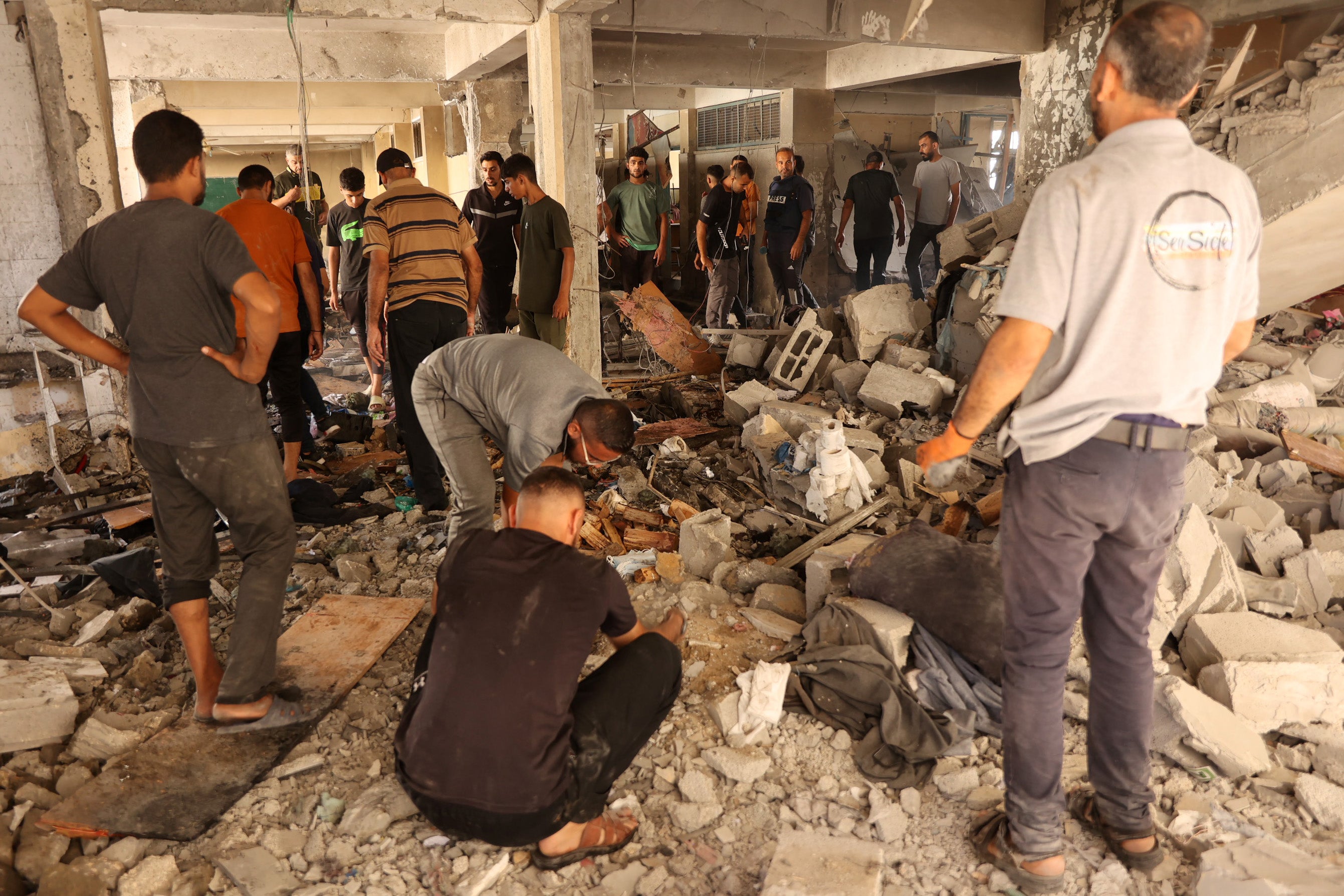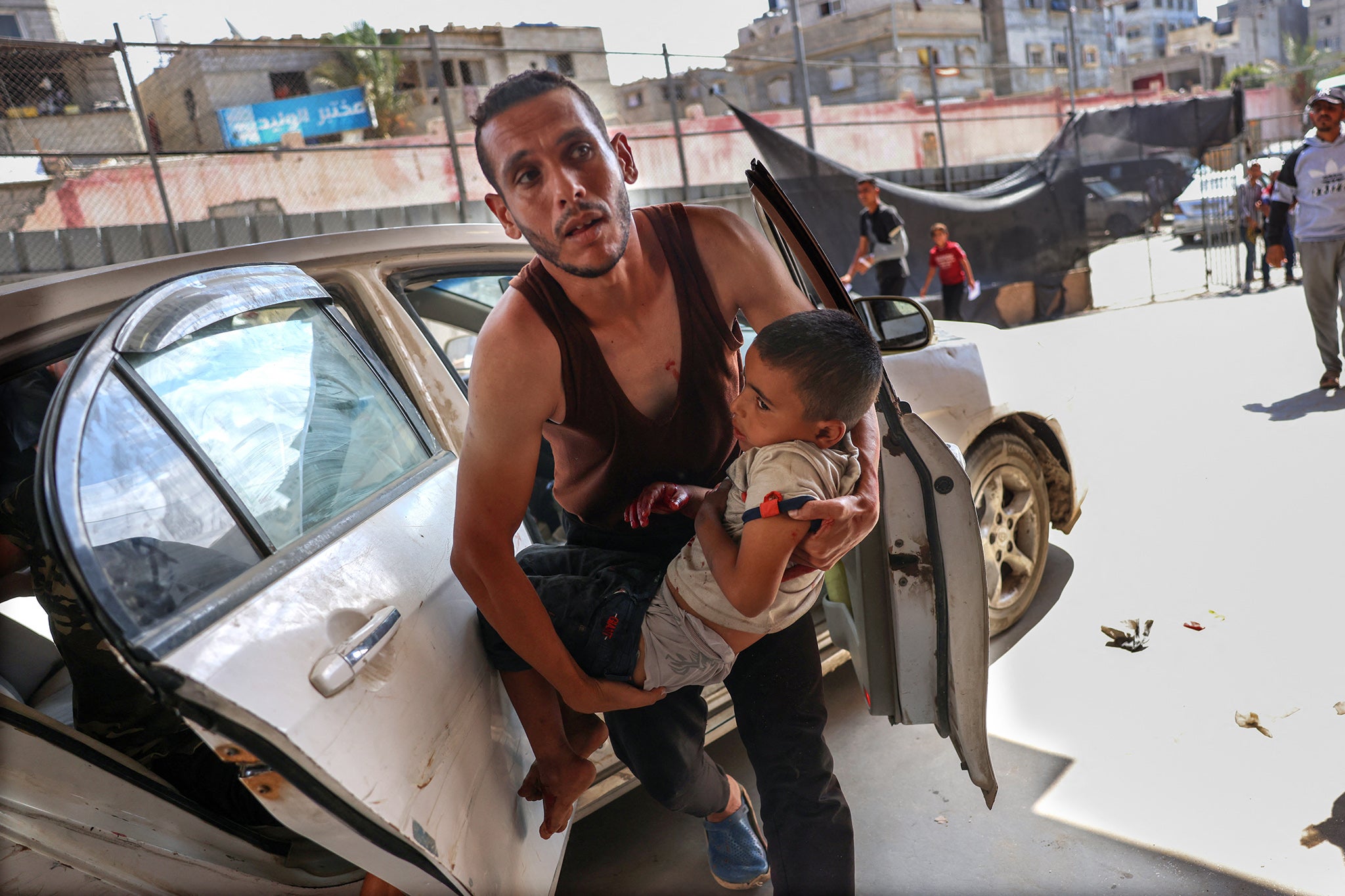On 7 October last year, Hamas launched a terror attack into Israel, killing around 1,200 people and taking around 250 hostages into the Gaza Strip.
In response, Benjamin Netanyahu’s government has embarked upon a devastating year-long bombing and ground campaign in Gaza.
As a result, latest figures from the Hamas-run health ministry say that 41,870 Palestinians have been killed, with one in four of them children.
A further 97,166 people have been injured, according to the health ministry, while repeated attacks on healthcare facilities have damaged 31 out of 36 of the hospitals that previously operated in the region.
According to the World Health Organisation, 12,000 patients are currently in need of treatment, with many of those suffering extensive burns and amputated limbs with limited access to lifesaving medical care.
Despite persistent attempts by the US, Qatar and neighbouring allies of both Israel and Hamas, no ceasefire deal has been successfully negotiated. During a brief pause in the war last November, the militant group released 110 hostages in exchange for 240 Palestinian prisoners, but the onslaught soon continued.
Around 1.9 million people, accounting for 90 per cent of the population, have now been forcibly displaced, with many living in refugee camps and facing food and economic insecurity.

Repeated calls for a ceasefire and warnings from Israel’s enemies have gone unheeded, with violence now spreading to the West Bank and Lebanon as concerns grow of a wider regional conflict.
In September, over 3,000 people were injured and at least 32 killed when pagers and walkie-talkies linked to the Iran-backed Hezbollah, an ally of Hamas, exploded. Israel and Hezbollah have been trading cross-border fire since the attack by Hamas, who are also backed by Iran. But the conflict has escalated in recent weeks.

A number of their top Hezbollah commanders have been killed by Israel, including long-time leader Hassan Nasrallah. Iran has retaliated by launching around 200 missiles towards Israel.
The Israeli army has started sending troops into southern Lebanon, while deadly airstrikes continue to kill civilians in Gaza.
Data from conflict specialist non-profit ACLED (Armed Conflict Location and Event Data) shows that there have been over 20,000 strikes, artillery attacks, missiles and explosions in the region between October 7 2023 and September 27 2024.
The data is collected from a variety of sources ongoing throughout the conflict, and not independently verified. Figures should be taken as approximate, as more attacks may not have been recorded.
Israel has carried out in excess of 10,547 of these cross-border attacks (specifically air/drone strikes, artillery/missile attacks, and remote explosions/landmines) in Palestinian territory, in that timeframe.
When including strategic actions such as bombing of bridges and infrastructure, the number is much higher. This also excludes battles and other violence against civilians.
Meanwhile, attacks on Israel by foreign actors (including Hamas, Hezbollah and allies) are at over 2,042.
The majority of these, around three in four, have been carried out by Hezbollah.
According to ACLED’s databases, over half of Israel’s armed attacks in Gaza and the West Bank have been “civilian targeting” – where civilians were the main or only target of an attack.
This makes up approximately 6,000 explosive attacks which targeted civilians in Palestine in under one year.

Israeli forces have previously justified bombing civilians due to Hamas using Palestinians as “human shields”; recent reporting from The Independent showed that Israeli soldiers have used civilians in the same way.
Overall, Israel has carried out five times as many armed attacks on Palestinian territory, compared to all attacks on Israel combined.
Here’s a look at all the figures after a year of conflict in the Middle East:
1,205
The number of people killed in the 7 October attack according to Israeli tallies, including hostages killed in captivity.
251
The number of hostages seized during the attack, of which 101 are still believed to still be in Gaza. Israel believes more than 30 of those left are dead.
29
The number of locations the Israel-Gaza border fence was breached by hundreds of Hamas fighters during the Hamas attack.
150,000
The number of people evacuated from their homes in southern Israel, on or immediately after 7 October. There have also been 5,432 reported injures across Israel since the Hamas attack.
41,870
The number of Palestinians killed in Gaza since 7 October, according to Gaza’s health ministry. At least 97,166 others have been injured. One in four of these deaths were children (11,000 children) and more than 6,000 women [Latest Gaza health ministry stats]
1.9 million
The number of people in Gaza forced to leave their homes, many multiple times. That amounts to more than 85 per cent of those living in Gaza.
495,000
The number of people facing catastrophic hunger across Gaza, according to UN-backed reports. More than 96 per cent of Gaza’s population are facing a food crisis.
304
The number of aid workers killed inside Gaza since 7 October. At least 174 journalists have also been killed inside the beseiged enclave according to local figures.
66%
The percentage of buildings damaged or destroyed across the Gaza Strip. That amounts to 164,000 structures, including 70,000 homes.
31 out of 36 hospitals
The number of hospitals in Gaza that have been damaged or put out of service completely. There have been 1,000 attacks on healthcare facilities across the occupied Palestinian territories, according to the World Health Organisation.
12,000
The number of patients that need medical evacuation from Gaza, according to the World Health Organisation.
From 500 to 69
The average number of trucks that entered Gaza per day in August 2024 according to 15 charities. It was around 500 a day before the war.
1,060,342
The tons of aid delivered into Gaza since the war began, according to Israeli figures. That involved 53,000 trucks and 10,000 pallets. [Source: Israel]
701
The number of Palestinians in the occupied West Bank killed by Israeli forces or settlers since 7 October, according to the Palestinian health ministry. 24 Israelis have been killed in Palestinian militant attacks across the same period, according to Israeli officials
10,000+
The number of 2,000-pound bombs the US has sent to Israel since 7 October, alongside thousands of Hellfire missiles. In August, the US approved the sale of $20bn in fighter jets and other military equipment across years-long contracts.
£100m
The amount of aid committed by the UK to Gaza and the occupied West Bank between 2023 and 2024.
10,500+
The number of strikes, artillery attacks and bombings on the occupied Palestinian territories by Israel since 7 October, according to war monitors.
2,100+
The number of cross-border strikes into Israel by Hezbollah, Hamas and other militants since 7 October.
8,800+
The number of strikes, artillery attacks and bombings into Lebanon by Israel since 7 October, according to war monitors.
2,000+
The number of people killed in Lebanon since the Hamas attack, many of them since Israel began an intense bombardment in September. That includes 127 children and 261 women. There have been 9,400 injuries.

